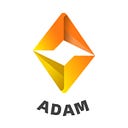Data Value Returns to Users, ADAMoracle Creates a Model of “DataFi”
With the development of blockchain, big data, artificial intelligence and other technologies, the “information Internet era” represented by Web2.0 is also evolving towards Web3.0, which is the “value Internet era”. “Data” gradually becomes the core of economic development in this process.
Under this trend, treating data as a “resource” is no longer enough to meet the needs of the times. In order to promote the flow of data and the occurrence of an intelligent society, data should be regarded as an “asset”, whose ownership, usage rights, management rights and distribution rights should be clarified.
The development of society is gradually shifting from a resource-driven economy to a data-driven economy, which means a shift in the economic trajectory, and the effects of this shift are spreading outwards, especially in areas such as the data-based internet and blockchain.
We have reasons to believe that data capitalization will be the next milestone that will subvert the world and promote the development of the times. Meanwhile, ADAMoracle follows the trend of the times and takes the lead in developing the “DataFi” economic format in the blockchain field.
“DataFi” is the abbreviation of Data Finance. In a broad sense, it refers to the data resources legally owned or controlled by organizations, structured or unstructured data such as texts, images, databases, etc., which are also financial or commercial activities that can directly or indirectly bring economic and social benefits.
ADAMoracle proposes that “DataFi” means that through the combination of real world and on-chain data, structured or unstructured data such as texts, images, databases, etc., which are also financial or commercial activities that can directly or indirectly bring economic and social benefits to on-chain applications such as DeFi, NFT, and Metaverse with the core of empowering the industry ecology and provide commercializable high-value data for the development of the world on the chain.
In the information age, information can be obtained at almost zero cost anywhere and at any time. The blockchain field is characterized by openness and transparency, and massive amounts of data on the chain can be obtained at will. In spite of the ubiquity of information, decisions are still made by people, and data is overwhelming us. The software, programs, tools, computing power and algorithms developed by engineers become very important at this time. This is an application-first era, and data is only a by-product of digital services.
Nowadays, however, the age of information is moving towards the age of intelligence. Since the scale and speed of data generation is now so large, the scale and frequency of computer usage data continues to grow. At the same time, data also enables machines to become more intelligent. We should note that all the applications now take data as the starting point to make the system intelligent so that it can process more data. Therefore, in the era of intelligence, data comes first, and data is the fundamental first starting point.
As this concept changes, we see the size of the data expands rapidly as well. IDC (2018) predicts that by 2025, global data will reach 175ZB, of which 90ZB may come from the Internet of Things (note, rather than people), and 80% of the data will be unstructured.
Let’s oversee the economic benefits of global data flows. According to an analysis conducted by McKinsey, from 2005 to 2014, cross-border data flow has brought about a 3% increase in global GPD, and the added value generated by data flow is estimated to be 2.3 trillion. Furthermore, the latest figures show that nearly 8% of the EU’s GDP is generated from personal data. The cross-border flow of data also promotes trade flows, foreign direct investment and personnel flows, etc.. If the direct and indirect effects of data flow are considered at the same time, the contribution of trade in goods to GDP has actually exceeded.
So data is not only the starting point for scientific originality, but it also generates wealth.
ADAMoracle builds the first encrypted data computing network with its global node and resource system, and builds the data link layer, network layer and transmission layer of the chain ecology, which can not only transmit the data information off the chain to the chain, but also can realize the aggregation of on-chain information into off-chain processing, reducing the use of data information and computing costs.
The data information on the chain is complex, Thus, the seemingly simple data integration function actually requires strong off-chain computing power as a support. The global distributed data source that ADAMoracle is about to build will lay a strong foundation for “DataFi” to realize the commercialization of data information.
The “DataFi” application created by ADAMoracle serves users who obtain data over this network. In the coming metaverse era, data is assets and value. ADAMoracle enables every role involved in data circulation, such as producing, computing, transmitting, and storing data, to obtain corresponding benefits. While ADAMoracle serves users and enriches the ecology on the chain, it will also give back to every node that builds the first encrypted data computing network ecology.
Data assetization will be a major change in the next few decades. The “DataFi” proposed by ADAMoracle will also extend from the blockchain field to the entire Web3.0. The world is leaving the era of information and entering the era of intelligence. Meanwhile, data, computing power, and algorithms are all accelerating this process, and the entire physical world and economic and social life are moving in the direction of digitization.
